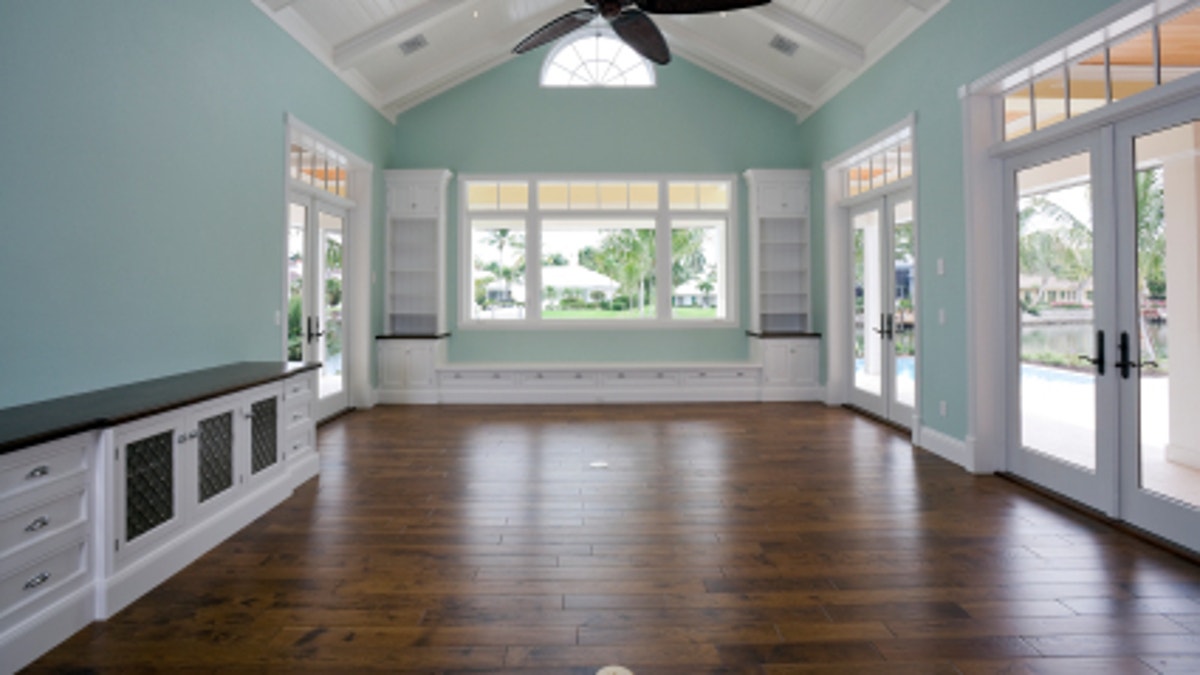
(iStock/Terry J Alcorn, Inc.)
While Americans can expect record hot weather this summer, according to the National Oceanic and Atmospheric Administration, there are ways to cool down your home when the temperature rises. Here are some tips to get you started.
Look for eco-friendly solutions
Plant some trees. The AARP's savings expert, Jeff Yeager, admits this is more of a long-term strategy, but planting trees in strategic places around your house not only boosts property values but also reduces indoor temperatures by as much as 20 degrees.
For more immediate relief, Yeager suggests ice-water fanning. Place a shallow bowl of ice water in front of a directional or window fan to increase the chill factor.
"If you have a stone or brick patio directly adjacent to your house, try hosing it off on hot days," he says. A breeze blowing across a cool, wet surface acts as a natural air conditioner.
Matt Hess of Power Home Remodeling Group proposes door sweeps on the bottoms of all doors to trap cool air, in addition to closing shades and blinds during the day. If temperatures are chillier after the sun goes down, open windows for a night-time breeze. Remember to close them again in the morning to seal in cool air.
Hess advises pale-gray shingles if replacing a roof because they attract less heat than darker ones. Likewise, white shades and blinds are ideal for reflecting heat. Mini blinds can reduce solar heat by 40 to 50 percent.
Karl Zellmer, at Emerson Climate Technologies, advocates proper insulation as a wise investment that will continue to keep homes significantly cooler during summer months. He also advises checking the seals around windows and doors to avoid drafts.
Install ceiling fans
A better option than their portable counterparts, ceiling fans "can make you feel up to 8 degrees cooler, and they're relatively inexpensive to purchase," says Yeager. Most are reversible, so make sure your fan is blowing air downward, not upward. Don’t forget to turn them off when leaving the room.
Steer clear of heat and humidity generating activities
Avoid using the stove and oven; opt instead for the microwave or outdoor grill. Run dishwashers and clothes dryers at night, and don’t engage all of your appliances at once.
"Always run the bathroom fan during and for 20 minutes after a shower to help reduce humidity," advises Zellmer.
Consider changing your light bulbs as incandescent light bulbs actually generate heat. Hess recommends swapping them for energy-efficient compact fluorescent light bulbs or halogen infrareds.
Maximize your air conditioning
Hess suggests replacing air conditioner filters every month because dirty filters limit airflow. Planting trees or shrubs to shade AC units can increase efficiency between 5 and 10 percent. Place electronic equipment like televisions and computers away from thermostats. The heat they produce could cause the AC to run overtime unnecessarily.
When it's really hot, Hess encourages homeowners to switch the fan mode on thermostats from "auto" to "on" to continuously cycle the air and make the temperature on all floors feel consistent.
Zellmer reminds homeowners that efficiency is measured by SEER (Seasonal Energy Efficiency Rating); buy AC units marked with anything above 15. Keep the outside unit clean and free of debris for optimal functioning.
Even if you have an air conditioner, ceiling fans promote air movement and help make the room feel cooler.
Keep your body cool
For really extreme temperatures, "Rinse your shirt in cold water. Do this a few times a day, wring it out a little, and wear it around the house," advises Yeager.
Make your own "chill pillow." Keep a 5- or 10-pound bag of rice in the freezer during the day (still sealed in its unopened plastic bag), and then put the bag in a pillowcase for nighttime use.
Take a cold shower and wear clothes made from natural fabrics. Stay away from protein-packed meals as they can warm up your body; select salads or sandwiches instead.
Always remember to stay hydrated. Drink more water than usual and avoid alcohol and caffeine.